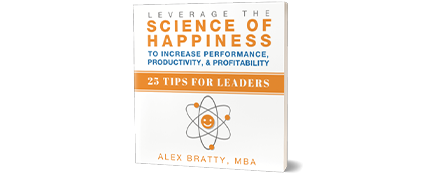As leaders, we all experience the stress of performing under pressure.
Dealing with competition, change, deadlines, conflict—it’s all just entry to the leadership ballpark.
Still, we’re expected to maintain high levels of performance regardless of the challenges thrown at us.
So, how can we do that? How can we consistently sustain peak performance, even under pressure?
The answer lies in six simple strategies that have been tried and tested:
1. Energy Management. This is all about recognizing whether you need to dial-up or dial down for a situation. If you need to activate up quickly to meet a deadline or give a presentation, consider engaging in rapid breathing, playing some upbeat music, and giving yourself some energizing verbal and image cues. For example, try the Wonder Woman stance for a few seconds, or clench your fists and release them as you say “explode!” On the other hand, if you need to activate down to reduce anxiety or stress, try deep belly breathing, meditation, and body scans that help slow the heart rate and send a signal to your brain that all is well in your world.
2. Thought Control. We all have that internal voice that questions our abilities. To escape its clutches, we have to (a) recognize that it’s just a voice, (b) stop the negative thoughts in their tracks by challenging whether they are true (hint, they rarely are), and (c) reframing the situation. For example, let’s say you just got reamed out by a boss or client, it’s easy to take it personally and agree with that voice that tells you you’re not good enough. But you can also reframe the situation by taking control of your thoughts. Ask yourself, “Isn’t it possible that this situation has nothing to do with my performance?” “Isn’t it true that this client yells at everyone?” You get the point. You have to challenge the negative thoughts and see the situation from another perspective.
3. Visualization. This is where the world of business can learn so much from the world of sports. All of the top players in any sport spend time mentally visualizing the shot they want to make or the race they want to run. In the same way, you can also take a few quiet moments to imagine yourself flawlessly fielding questions from investors or closing a sale. The research actually shows that the mind has difficulty distinguishing between mental imagery and the real deal. So, the more you practice this, the more you can create the reality you want!
4. Setting Goals. Hold on—don’t eye-roll at me just yet! I know you know this one because everyone talks about it. But did you know that the type of goal you set can determine your performance? Yup, it’s true. Essentially, if you’re faced with a less challenging goal or a task that you’re already proficient at, it’s most beneficial to set outcome goals. However, if you’re navigating new territory, outcome goals can be detrimental to performance. Instead, you need to set process goals, which basically means that you’re focusing on progress and orienting your goal around the mastery of new skills.
5. Attention Control. Separate from thought control, this strategy is all about minimizing or eliminating distractions so you can fully focus on the task at hand. Yes, part of this includes the usual hacks of turning off notifications and checking emails periodically. But that only takes care of the external distractions. You also need to control the internal distractions. You can do this by regularly engaging in a mindfulness practice that elevates your concentration. Or, consider using attentional cues to keep you on track. For instance, let’s say you’re walking into a new client pitch. It’s easy to get distracted by the results you want (closing the deal!) and forget about what you need to do to achieve that outcome. So, to stay focused, give yourself different cues such as “remember to engage in pleasantries” while setting up the room, and “look people in the eye” when meeting them for the first time. If you have a series of attentional cues to guide you, it can vastly improve your performance during every step of the process.
6. Practices and Habits. As every top-performer will tell you, consistency is crucial to achieving success. Consider developing your own personalized routine of:
- a pre-performance ritual (e.g., a breathing exercise or saying affirmations)
- a maintenance routine (e.g., a proven framework or process for effective task execution)
- a contingency plan (e.g., an “if this, then that” plan for anticipated issues or problems)
- a post-performance evaluation (e.g., acknowledge what you did well and where you could improve for next time).
Using a blend of these mental, emotional, and physical strategies can help you achieve and sustain peak performance, no matter what you’re up against.
Don’t try to implement them all at once. Just start with the one or two that resonate most with you and try them out. As they become habits, incorporate more so that you’re incrementally augmenting your peak performance repertoire.
If you want to dive deeper into peak performance and the strategies shared in this post, check out this excellent article by Matthew Hallett and Bobby Hoffman.
And, if you want more practices that can increase productivity and performance, just download my free book: 25 Tips for Leaders: How to Leverage the Science of Happiness to Increase Performance, Productivity, and Profitability.






0 Comments